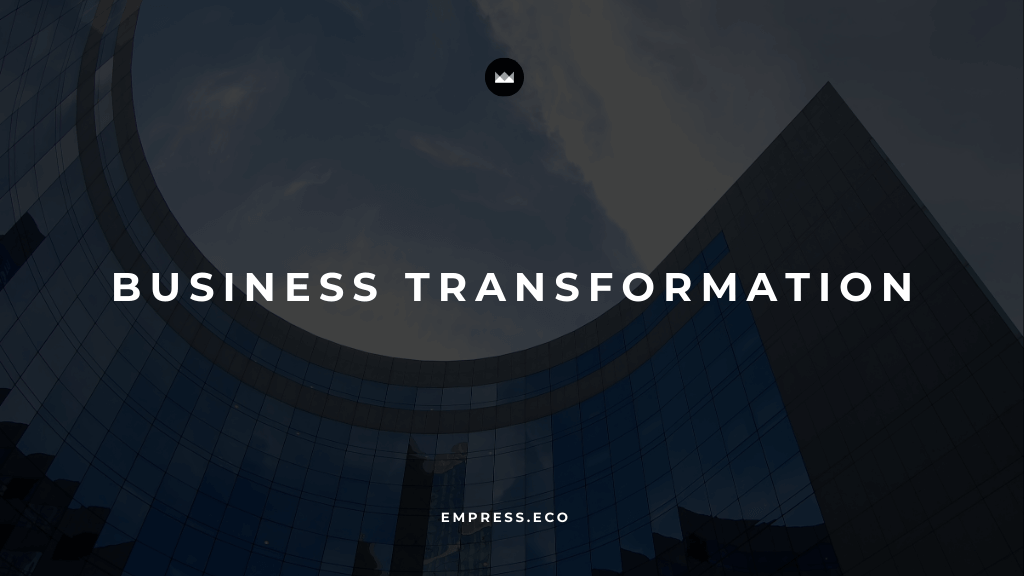
Achieve SDG 16 Goals with Aria’s Digital Transformation Expertise
Explore how digital technologies can promote peace, justice, and strong institutions, driving progress towards SDG 16.
Table of Contents
As we approach the 2030 deadline for the United Nations Sustainable Development Goals (SDGs), the role of digital transformation in achieving these goals has become increasingly significant.
SDG 16, which focuses on promoting peaceful and inclusive societies, providing access to justice for all, and building effective, accountable, and inclusive institutions, is particularly poised to benefit from the advancements in digital technologies. This blog explores how digital transformation can support SDG 16 and highlights key initiatives and technologies that are making a difference.
Digital transformation involves the integration of digital technology into all areas of society, fundamentally changing how individuals, businesses, and governments operate and deliver value. It encompasses a wide range of technologies, including artificial intelligence (AI), blockchain, big data, and mobile technology, all of which can drive innovation and efficiency.
The Importance of SDG 16
SDG 16 is often considered the cornerstone for achieving a sustainable, equitable, and just world. It emphasizes the need for good governance, human rights, and justice, which are essential for peace and development. The goal aims to reduce violence, ensure access to justice, and build effective, accountable, and inclusive institutions at all levels.
The interconnected nature of the SDGs means that progress on SDG 16 can have a ripple effect on other goals. For instance, reducing corruption and improving governance can enhance economic growth (SDG 8), reduce inequalities (SDG 10), and promote social inclusion (SDG 5). By leveraging digital transformation, we can address many of the challenges that hinder the achievement of SDG 16 and create a more transparent, just, and inclusive world.
Digital Transformation: A Catalyst for SDG 16
Digital transformation refers to the integration of digital technologies into all areas of society, fundamentally changing how we live, work, and interact. This transformation has the potential to accelerate progress towards SDG 16 in several impactful ways:
Enhancing Governance and Accountability
Blockchain Technology
Blockchain’s inherent transparency and security features can significantly reduce corruption and increase accountability in public institutions. For example, OS City uses blockchain to digitize government services, making them more accountable and fraud-proof. By creating immutable records of transactions and governmental processes, blockchain can help track public spending and ensure that funds are used appropriately, fostering greater trust in public institutions.
Data Protection Systems
Implementing robust data protection systems is essential for boosting public trust in digital governance. These systems ensure the privacy and security of citizens’ data, which is crucial for maintaining confidence in digital services. Advanced encryption methods, secure data storage, and strict access controls can protect sensitive information from unauthorized access and cyber threats, thereby enhancing the credibility and reliability of digital governance initiatives.
Improving Access to Justice
Mobile Technology
In developing countries, mobile technology plays a pivotal role in facilitating access to information and legal services. For instance, mobile technology is used in Tanzania and Pakistan for birth registration, ensuring legal identity for all children. This not only provides children with their first legal recognition but also enables access to a range of services, such as education and healthcare, which are contingent on having a legal identity.
AI and Machine Learning
These technologies can revolutionize financial management and fraud detection by analyzing vast amounts of data to identify patterns indicative of corrupt activities. AI-driven systems can monitor transactions in real-time, flagging suspicious activities and enabling swift action to prevent fraud and corruption. Furthermore, AI can assist in legal research, case management, and providing legal advice, making justice more accessible and efficient.
Promoting Inclusive Societies
Digital Identity Solutions
Digital identity systems can play a crucial role in ensuring that everyone, including marginalized communities, has access to essential services. These systems provide individuals with a secure and verifiable way to prove their identity, which is fundamental for accessing healthcare, education, banking, and other services. By ensuring that no one is left behind, digital identity solutions promote social and economic inclusion and empower individuals to participate fully in society.
E-Governance Platforms
Platforms like the SDG Monitor in Armenia leverage AI and big data to analyze public feedback and government activity. These platforms enable more inclusive and responsive decision-making by providing governments with real-time insights into citizens’ needs and concerns. By facilitating two-way communication between citizens and government officials, e-governance platforms ensure that public policies are more aligned with the needs of the community, thereby promoting a more inclusive and participatory governance process. By harnessing these digital technologies, we can make significant strides towards achieving SDG 16, creating a world where peace, justice, and strong institutions are not just ideals, but reality.
Case Studies and Success Stories
Several initiatives around the world demonstrate the positive impact of digital transformation on achieving SDG 16. These case studies highlight how various countries are leveraging technology to foster peace, justice, and strong institutions.
Armenia’s SDG Monitor
Armenia has developed an AI-powered platform called the SDG Monitor that combines conventional and non-conventional data sources to track progress on SDG 16 in real-time. This platform uses data analytics and AI to gather insights from diverse data sets, including social media, government records, and citizen feedback. By providing real-time monitoring and analysis, the SDG Monitor enhances transparency and accountability in governance. It allows policymakers and citizens to access up-to-date information on the country’s progress towards achieving SDG 16, fostering a culture of openness and responsive governance.
Nigeria’s Digital Cash Transfer Mechanism
In Nigeria, the digitalization of traditional cash transfer systems has significantly improved the distribution of social benefits. The Digital Cash Transfer Mechanism ensures that social protection payments reach the most vulnerable populations efficiently and securely. By using biometric identification and mobile banking technologies, Nigeria has been able to enhance the confidentiality and accuracy of cash transfers, reducing the risk of fraud and corruption. This initiative has not only streamlined the process of distributing social benefits but also increased the trust of beneficiaries in the system, thereby strengthening social protection frameworks.
Chile’s Digital Ecosystem for the Elderly
Chile has implemented a digital ecosystem designed to connect older adults with public services through a community app. This initiative aims to promote social inclusion and ensure that elderly citizens have easy access to essential services such as healthcare, social support, and government assistance. The community app provides a user-friendly interface for older adults to interact with public services, receive timely information, and participate in community activities. By leveraging digital technology, Chile’s digital ecosystem helps bridge the gap between elderly citizens and public services, enhancing their quality of life and ensuring that they remain active and engaged members of society.
These case studies illustrate the transformative power of digital technologies in achieving SDG 16. By fostering transparency, enhancing social protection, and promoting social inclusion, digital transformation initiatives are making significant strides towards building peaceful, just, and inclusive societies. As we continue to innovate and implement digital solutions, the potential for achieving SDG 16 and creating a better world for all becomes increasingly attainable.
Challenges and Considerations
While digital transformation offers numerous benefits, it also presents challenges that need to be addressed to ensure the successful and equitable achievement of SDG 16:
Digital Divide
A significant portion of the global population remains offline, unable to benefit from digital innovations. This digital divide exacerbates existing inequalities and prevents many from accessing essential services, information, and opportunities. Bridging the digital divide requires concerted efforts to ensure universal digital connectivity.
This includes expanding internet infrastructure to underserved and rural areas, making digital devices more affordable, and providing digital literacy training to empower individuals to effectively use digital technologies. Governments, private sector companies, and international organizations must collaborate to create inclusive digital policies that prioritize connectivity for all.
Cybersecurity and Privacy
As digital systems become more prevalent, ensuring their security and protecting users’ privacy is paramount. Cyber threats, including hacking, data breaches, and cyber-attacks, can undermine trust in digital systems and have severe consequences for individuals and institutions. Robust legal frameworks and technological safeguards are essential to mitigate these risks. This includes implementing stringent cybersecurity measures, such as encryption, multi-factor authentication, and regular security audits, as well as establishing clear regulations to protect personal data. Public awareness campaigns and education on cybersecurity best practices are also crucial to empower individuals to protect themselves online.
Inclusive Design
Digital solutions must be designed to be inclusive, taking into account the needs of marginalized and vulnerable populations to ensure that no one is left behind. Inclusive design involves creating digital tools and platforms that are accessible to people with disabilities, low literacy levels, and limited technological skills.
This can be achieved by adhering to universal design principles, such as providing multiple modes of interaction (e.g., text, voice, and visual), ensuring compatibility with assistive technologies, and using plain language. Engaging diverse user groups in the design and testing process can help identify and address potential barriers, ensuring that digital solutions are user-friendly and equitable. Addressing these challenges is crucial to maximizing the benefits of digital transformation and ensuring that the progress towards SDG 16 is inclusive and sustainable. By focusing on bridging the digital divide, enhancing cybersecurity and privacy, and promoting inclusive design, we can create a digital future that empowers all individuals and communities, fostering peace, justice, and strong institutions worldwide.
Conclusion
Digital transformation holds immense potential to support the achievement of SDG 16 by enhancing governance, improving access to justice, and promoting inclusive societies. The integration of advanced technologies such as blockchain, AI, mobile technology, and digital identity solutions can drive significant progress in creating transparent, accountable, and effective institutions. These technologies can also ensure that justice is more accessible and that societies are more inclusive, providing equal opportunities for all individuals, including marginalized and vulnerable populations.
However, realizing this potential requires concerted efforts to address several key challenges. Bridging the digital divide is essential to ensure that everyone, regardless of their geographical location or socioeconomic status, can benefit from digital innovations. Ensuring robust cybersecurity and protecting user privacy are critical to maintaining trust in digital systems. Additionally, designing inclusive digital solutions that consider the diverse needs of all users will help ensure that no one is left behind.
By leveraging the power of digital technologies and addressing these challenges, we can create a more just, peaceful, and inclusive world for all. The path to achieving SDG 16 through digital transformation is complex, but with collaboration, innovation, and a commitment to equity, it is achievable.
Join the conversation and share your thoughts on how digital transformation can further support SDG 16. Together, we can work towards a more equitable and sustainable future.
Empress Newsletter
Join the newsletter to receive the latest updates in your inbox.







